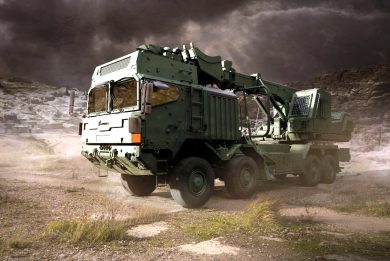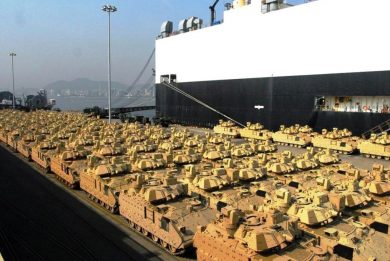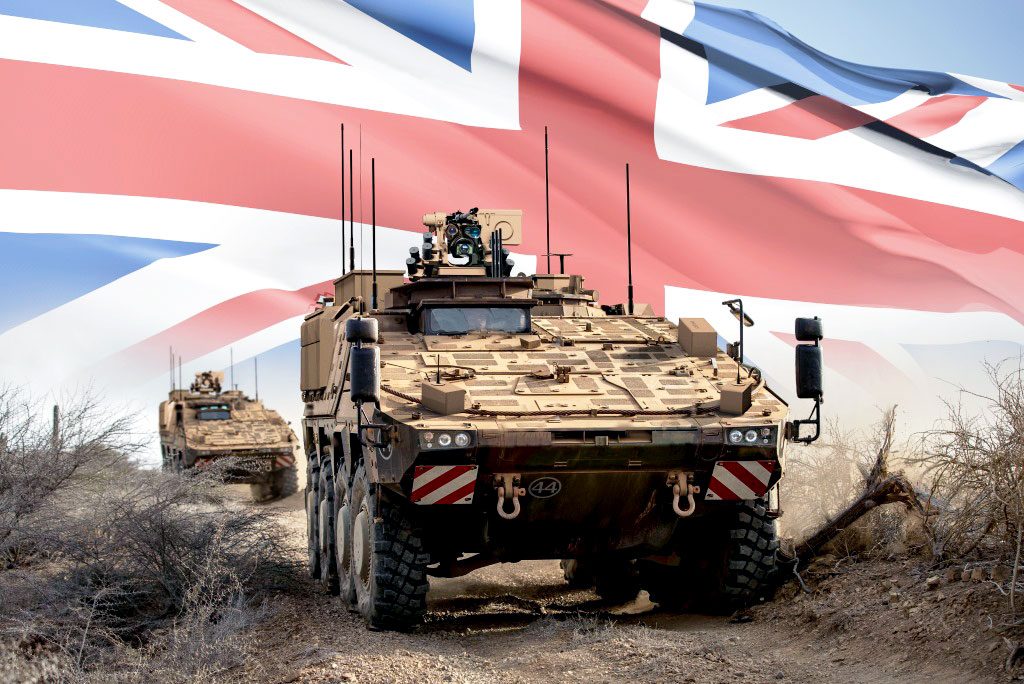
IAV 2024 – Where does the Boxer go
At the International Armoured Vehicles Conference organised by Defence iQ, which took place at Twickenham, London, 22-25 January, several briefings were centred on the Boxer, the 8×8 armoured vehicle designed and manufactured by ARTEC, the joint venture between Rheinmetall and Krauss-Maffei Wegman formed in 1999. Selected by the UK DoD as the Mechanised Infantry Vehicle in 2018, the new vehicle is close to deployment with the British Army, and new variants are envisaged
Five armies have selected the Boxer, four of them having it already in line; for European NATO countries, Germany, the Netherlands, Lithuania, and the United Kingdom, in entry order, the programme is managed through OCCAR (Organisation Conjointe de Coopération en matière d’Armement / Organisation for Joint Armament Co-operation), Australia having an observer status. Three of the European nations have already received 688 Boxers and Germany deployed its’ vehicles in Afghanistan, which allows the Boxer to harbour the “combat proven” label.
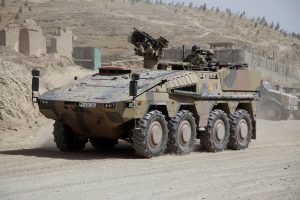
Detailing nation by nation, Germany has currently selected four variants, Armoured Personnel Carrier, Command Post, Ambulance and Driver Trainer. The Counter-UAS variant is under development while the Joint Fire Support Team has successfully achieved the Critical Design Review. Moreover, OCCAR received a tasking from the Netherlands and Germany for a new Electronic Warfare variant; the combined development is not surprising as since the Cold War era the two armies developed common EW vehicles, at that time based on the Fuchs platform. For the time being the Netherlands field five different modules, Command Post, MEDEVAC, Cargo, Engineer, and Driver Trainer. Beside the future EW variant, its’ Army is also looking at a Lower Layer Air Defence variant, no details being available. While the two aforementioned countries employ the Boxer in combat support and combat service support roles, Lithuania is using them as first line Infantry Fighting Vehicles; known as Vilkas, for Wolf, it is equipped with a medium calibre turret rather than with a small calibre remotely controlled weapon station. Four of the five variants are therefore IFV ones with differences for squad, platoon and company commanders, and battalion command post, the fifth variant being the Driver Trainer. Lithuania issued a Request for Proposal to OCCAR for a second batch of vehicles, these too to be provided in IFV configuration. As for Australia, its Combat Reconnaissance Vehicles are fitted with a two-man turret armed with a 30 mm cannon.
Currently Germany has in service 403 vehicles in the A1 and A2 standards, with A1 driving modules being retrofitted to the A2 standard, and four different versions of the mission module, the Netherlands fields 200 Boxers in five versions, here too retrofit activity being underway, the same applying to Lithuania, which has received all retrofitted Batch 1 vehicles. As for the UK, 623 vehicles are on order in four different versions, the programme being in the development, design, verification validation phase. All driving modules that will be delivered will be at the A3 standard with a 600 kW engine (versus 530 kW of previous versions) and a 38.5 tonnes GVW (versus 35 tonnes of the A1 and 36.5 tonnes of the A2). As for Australia, under LAND 400 Phase 2 211 Boxer Combat Reconnaissance Vehicles were acquired; deliveries are underway, initial driving modules being a hybrid A2/A3 version while the remaining will be in the A3 configuration.
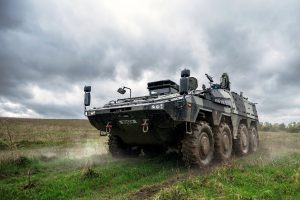
Coming to the UK, the British Army is planning to field Brigade Combat Teams equipped with Challenger 3, Ajax (one of the first production vehicles was visible at Twickenham) and Boxers, all those vehicles being fully digital. As said the British Army will receive the A3 version, with a more powerful engine, structural improvements ensuring a growth potential over 40 tonnes, and an Enhanced Generic Vehicle Architecture. The initial plan is to deploy the Boxer, officially the Mechanised Infantry Vehicle, in four variants, Infantry Carrier (146 vehicles), Command Post (212), Specialist Carrier (200) with four different role kits, and Ambulance (64). These all have a crew of three, the number of passengers hosted in the mission module varying, respectively eight, four and five, while the ambulance, the only module with a high roof configuration, will be capable to carry seven seated and two stretchered patients, or three and three, depending on configuration.
The total of 623 vehicles comes from the first contract for 523 vehicles signed in Q4/2019 and the follow-up contract for 100 more Boxers signed in Q1/2022. The timeline sees training for drivers in the Netherlands and for maintainers in Germany already ongoing since Q4/2022, with prototype and industry trials that began in Q1/2023, followed in Q4 that same year by the delivery of the first two vehicles for MoD trials, the unit involved being the Royal Regiment of Fusiliers. These will be followed in Q4/2024 by vehicles aimed at the first unit; its’ training cycle will start in late 2024 to allow it reaching the Initial Operational Capability (IOC) in Q4/2025. Battlegroups based on the three new vehicles will reach Full Operational Capability in Q4/2032. It is to note that the first 117 Boxers are being built on German production lines; the remaining 506 vehicles already contracted will be produced at WFEL and RBSL facilities in the UK, respectively in Stockport and Telford.
The IAV conference allowed to have a clearer view of the plans on potential new versions, the British Army considering increasing its fleet of Boxers to cover other combat and combat support roles. The UK is aims at increasing its Boxer fleet with some hundred more vehicles, and although none of the variants that will follow has yet been approved or contracted, a draft timeline for what is known as the Boxer Strategic Pipeline (BSP) was shown at IAV. According to the latter, the two first variants in the pipeline should be the Repair and Recovery Vehicle (RRV) and the Tyro Boxer Vehicle Layer Bridge Close Support Bridging, Tyro BVLB CSB in short. The latter will allow Class 100 (tracked) vehicles to cross water gaps or wide trenches while the former will ensure Royal Electric and Mechanical Engineers to recover damaged Boxers on the field. For both variants a possible IOC is forecasted in 2029, a bridging solution having already being developed and tested by WFEL, now KNDS UK. Providing an inherent indirect fire capacity to Boxer formations is a priority for the British Army, the Armoured Mortar Vehicle fitted with a 120 mm mortar, probably a semi-automatic system, having its IOC planned for 2030, contract pending. One year later the Army expects getting the Boxer in the SERPENS Deep Fire Radar configuration, based on a next-generation weapon locating radar. Another key issue, which was highlighted by the Ukrainian conflict, is short range air defence; to this end the British Army looks at the Counter-Small Aerial targets (C-SAT) version of the Boxer, which will deal with UAS and Loitering Munitions, its’ in service date being estimated in 2032. The MCCO for Mounted Close Combat Overwatch, developed in cooperation with MBDA and carrying an eight-canister launcher for the weapon of choice, the ground-launched Brimstone, is being currently developed, should also be introduced in 2032. The FOC date for the BSP is planned for 2037, all the aforementioned dates depending on when those programmes will be approved and contracted. An Electronic Warfare variant should also be added to the former.
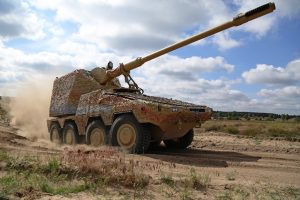
A further variant might join those already described, should the British Army select the wheeled proposal by KNDS for the Mobile Fires Platform programme. This solution, also known as RCH 155, is based on a Boxer drive module carrying an artillery module armed with a 155/52 mm gun with autoloader, with 30 ready-to-fire rounds, and capable of Multiple-Round Simultaneous Impact firing missions. This solution is also being considered by Germany and other NATO countries.
The British Army is already looking at spiral upgrading; artificial intelligence will definitely come on board along the vehicle’s life, while improvements on the remotely controlled weapon stations are also part of the upgrade plan. A hybrid propulsion might well become an issue in the Mid-Life Update programme; however, all nations are interested in the development of a potential Future Common Drive Module, which might become a reality under OCCAR coordination, hence a hybrid solution might well be part of that programme. The Boxer nations should also join forces for developing future mission modules, to limit costs and enhance interoperability and interchangeability.
The British Army plans a 30-year operational life from FOC for its Boxers, therefore MIV vehicles Out of Service Date is forecasted in 2062 while BSP vehicles should be retired in 2067.
Photos courtesy German MoD, RBSL and KNDS

